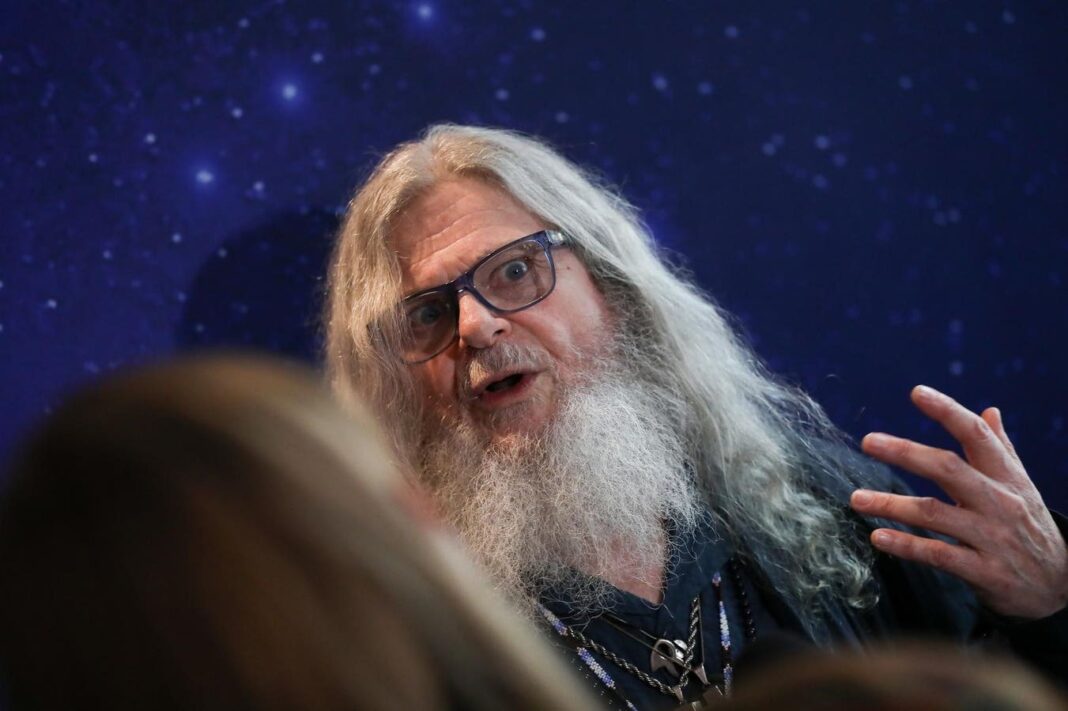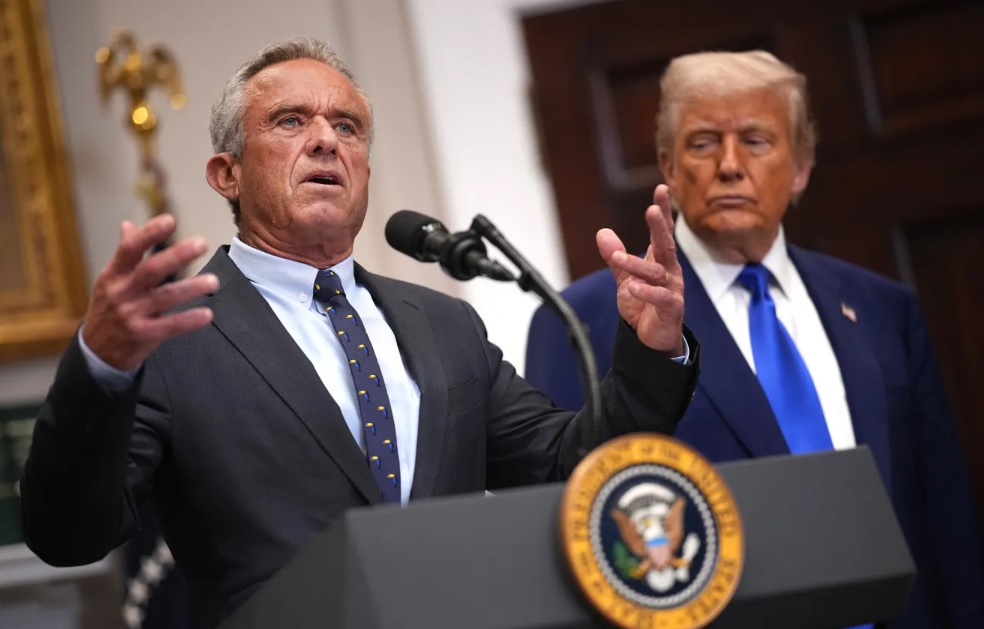Gustavo Santaolalla, composer and laureate of two Oscars, attends a press conference at the 18th … More
Most composers would never consider going into video games after a pair of back-to-back Oscar wins, but Gustavo Santaolalla isn’t most composers. For the 73-year-old musician/producer, the medium is utterly irrelevant, so long as the story contains a wealth of emotional resonance.
Following a pair of Academy Awards for his work on Ang Lee’s Brokeback Mountain (2005) and Alejandro G. Iñárritu’s Babel (2006), the Argentine native was “approached by several companies” with tantalizing job offers that he turned down, the composer tells me over Zoom. “I knew what I wanted to do. I think that whatever success I have achieved has to do not only with the things that I’ve done, but [also] the things that I’ve said no to. So at the time, there was the possibility of these big projects, but I knew what I wanted to do wasn’t in the market yet.”
One thing he really wanted to see, for example, was a new breed of video game after years of watching his son and Bajofondo bandmates play games like FIFA. “I always thought, ‘Man, if somebody, someday connects in an emotional way with a gamer, aside [from]
the combat and survival stuff, it’s going to be a revolution,’” he says. “Because I never found that in all the things I saw my son playing.”
His prayers were ultimately answered by Neil Druckmann, a creative executive and director at video game developer Naughty Dog, who pitched a title that would connect “with the player on an emotional level,” Santaolalla remembers. That’s how he came to score The Last of Us (2013), its 2020 sequel, and the current HBO series adaptation.
Play Puzzles & Games on Forbes
Set in a post-apocalyptic reality ravaged by a mutated strain of the zombifying Cordyceps fungus, The Last of Us quickly gained the status of a modern classic, with plenty of widespread critical acclaim aimed at its character development, weighty themes, palpable emotion, player mechanics, and music, of course. “When we found out that some people were crying while playing the game, we thought, ‘This absolutely works,’” says the composer who never really viewed the project as a mere video game.
“I’ve never felt that I was composing for a game,” emphasizes Santaolalla. “You can tell a great story in any medium. That’s why I think it works great in a [TV] series [format]. It would have worked as a puppet theater show because it’s a great story … It really talks about human relationships; parent-child relationships, father-daughter relationships — all that stuff.”
Santaolalla, who likes to work on a project from the script stage, began scoring the original Last of Us about three years before the public officially stepped into the shoes of grizzled smuggler Joel and Cordyceps-resistance Ellie. “In almost all the projects that I’ve worked on, I would say 80% of the music has been composed prior to anything,” he explains. “I relate [to material]
in a more abstract way, just with the story … You work from some drawings, but basically from the story, the characters, and what the director conveys when he tells the story.”
The resultant soundtrack — which utilized everything from acoustic and electric guitars to more obscure instruments like the Bolivian ronroco, vintage Fender Bass VI, and common PVC pipe — was achieved by an almost paradoxical approach. “I work a lot with silence,” Santaolalla continues. “I’m talking about an eloquent silence. Not silence as in the absence of sound, but a contrary silence that can sometimes sound louder than the loudest note you can have with an instrument. The use of space, the use of imperfection, which is a something that I love.”
MADRID, SPAIN – JUNE 29: Argentinian musician Gustavo Santaolalla attends “Inteligencia Musical” … More
When the long-awaited screen adaptation finally got rolling at HBO under the eye of Emmy Award-winning writer Craig Mazin (Chernobyl), Santaolalla and series collaborator David Fleming knew they’d have to walk a narrow tightrope in order to please die-hard fans and newcomers alike. “When things connect so deeply with people and you change it, they go, ‘I liked the [original] much better!” notes the former. “I think it was important to keep the themes [from the game], keep the sonic fabric. It didn’t turn into an orchestral score … I think that was very important and and helped not to alienate the people who love the game and who have now embraced the series, too.”
He continues: “I’m always thinking about supporting and pushing, not overstating or manipulating. You are manipulating in a way because you are trying to make the audience feel things, but in a subtle way. You want to make sure you are doing things dramatically and not melodramatically. That’s a big challenge when you go into live-action, especially in stories that have such heavy dramatic content. I’ve composed music for films [before], but I particularly like to be very cautious with the use of music.”
In terms of his working dynamic with Fleming, Santaolalla says the collaborative process was “organic and natural” from the start, but even more so in the second season. “We started to really exchange and infect each other’s work. It’s a great partnership,” he adds, voicing excitement for what they’ll come up with for Season 3. While not always the case, Fleming often gravitates towards action-oriented scenes, whereas Santaolalla prefers emotional and tension-filled moments.
Prior to boarding The Last of Us franchise, Santaolalla thought he’d pretty much seen it all in a professional music career that began when he was 17 over half a century ago. However, the video game truly marked the beginning of a fresh and “totally unexpected” chapter for him after decades of scoring many lauded titles.
“The way that people have connected with the music through the game is different. It has such an intensity … That I could suddenly be involved in a project that connected me with a totally new audience that is now opening its ears to other stuff that I’ve done? It’s a fantastic present that life has given me,” he concludes, recalling a particularly memorable fan interaction during a meet and greet in Helsinki last year. “This girl comes up to me and says, ‘I’m 21 years old and I’ve been a fan of yours since I was 10. Now I play the guitar because my dad played the game all the time.’ It’s a very, very rewarding project, and a very, very special thing in my life.”
Bella Ramsey, Gustavo Santaolalla, Alejandra Palacios at HBO’s “The Last of Us” Season 2 Premiere … More





